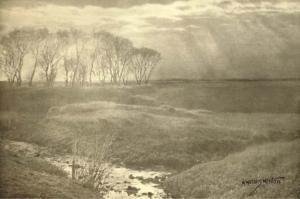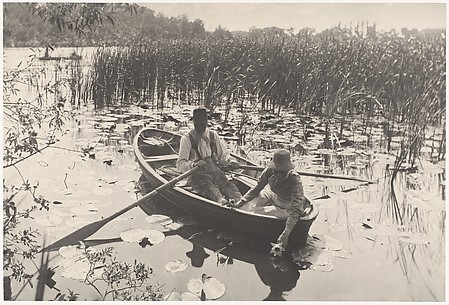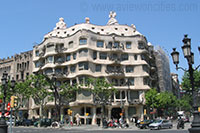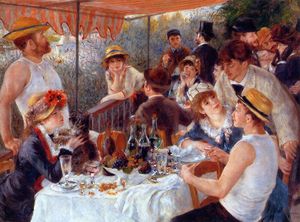Great Britain provided the legal and cultural foundations that enabled 'entrepreneurs' to pioneer the industrial revolution. Steam-powered ships, railways and technology emerged around 1850s as well as electrical power generation. Urbanisation led to the creation of the factory, and the start of the modern city.
During the industrial revolution an intellectual and artistic hostility towards the new industrialisation developed. This was known as the romantic movement. The movement stressed the importance of "nature" in art and language, in contrast to "monstrous" machines and factories. Mary Shelley's novel 'Frankenstein' reflected concerns that scientific progress might be two-edged.
There was great reaction towards the industrial revolution and revolt against aristocratic social and political norms of the 'age of enlightenment' and a reaction against the scientific rationalisation of nature. The movement validated strong emotions such as apprehension, horror, terror and awe, confronting the sublimity of untamed nature and its picturesque qualities. It embraced the exotic, unfamiliar, harnessing the power of the imagination to envision and escape. Individual imagination became a crucial part of ones freedom from classical notions of form in art.
Influenced by romanticism, the pre-raphaelite artists created ground vision of rich colour and ideal images of beauty, death, mythology or historical events. Seeking out freedom of expression and greatly inspired by the medieval age. the beauty of nature also motivated the pre-raphaelite brotherhood and was also a spiritual focus for this group.
Dante Gabriel Rossetti - La Ghirlandata 1873

For Rossetti, a follower of the pre-raphaelite movement, women embodied the mystery of life, and this belief ran through his diverse subject matter from his early pictures. Owing to its association with love, music often featured in Rossetti's paintings of women. In La Ghirlandata the beautiful but impassive Alexa Wilding is depicted plucking at the strings of a harp, garlanded with lushly blooming roses and honeysuckle, flowers that Rossetti associated with sexual attraction. Her hair is again loose and her draperies flutter about her neck in decorative flowing lines. It's sensual, organic colours and use of nature suggest a connection with 'mother nature'.
John Everett Millais - Ophelia 1851 - 52
John Everett Millais also a member of the group pre-raphaelites formed in 1848, got his inspiration from Shakespeare. Millais's image of the tragic death of Ophelia, as she falls into the stream and drowns, is one of the best-known illustrations from Shakespeare's play Hamlet.
Romanticism - Julia Margaret Cameron was especially noted for her depicting soft focus themes, mysterious lighting. Photographs with Arthurian and other legendary themes.
 The kiss of peace - Cameron
The kiss of peace - Cameron
Pictorialism - an approach to photography that emphasises beauty of subject matter, tonality, and composition rather than the documentation of reality. This approach was born in the late 1860s and held sway through the first decade of the 20th Century. It approached the camera as a tool, like that of a paintbrush and chisel, creating artistic statement. This meant that a photograph could have aesthetic value and be linked to the world of art expression. It derived from the thought of Henry Peach Robinson, mentioned in my blog - 'Foreign Travellers and English Naturalists'.
John Everett Millais - Ophelia 1851 - 52

John Everett Millais also a member of the group pre-raphaelites formed in 1848, got his inspiration from Shakespeare. Millais's image of the tragic death of Ophelia, as she falls into the stream and drowns, is one of the best-known illustrations from Shakespeare's play Hamlet.
Romanticism - Julia Margaret Cameron was especially noted for her depicting soft focus themes, mysterious lighting. Photographs with Arthurian and other legendary themes.
 The kiss of peace - Cameron
The kiss of peace - CameronPictorialism - an approach to photography that emphasises beauty of subject matter, tonality, and composition rather than the documentation of reality. This approach was born in the late 1860s and held sway through the first decade of the 20th Century. It approached the camera as a tool, like that of a paintbrush and chisel, creating artistic statement. This meant that a photograph could have aesthetic value and be linked to the world of art expression. It derived from the thought of Henry Peach Robinson, mentioned in my blog - 'Foreign Travellers and English Naturalists'.
Alfred Horsley Hinton - English landscape photographer who was best known for his work in the pictorialist movement in the 1890s and early 1900s. He agreed that photography should be considered a form of high art. His landscapes tended to be characterised by prominent foregrounds and dramatic cloud formations. Unlike many pictorialists, Hinton preferred sharp focus to soft focus lenses. He occasionally cropped and mixed cloud scenes and foregrounds from different photographs, and rearranged the foregrounds to make them more pleasing.
 (1898) sunshine and rain - Hinton
(1898) sunshine and rain - Hinton
Naturalism - Peter Henry Emerson had begun to question the verisimilitude of photography by separating scientific truth from artistic truth. He noted that photographers should show loyalty, not to scientific fact, but to the appearance of reality. Emerson advocated the importance of the 'pure' approach to photography. He believed marring the photograph in any form was an abomination. He believed that the responsibility of the artist was the representation of the effects of nature on the eye. They were an impression, "vision as impression" to photography. He believed that the impression must be faithful to nature and that nothing should be altered, added or taken away. Every nuance of light and atmosphere should be faithfully recorded. The painter became a type of lens, through which nature is transferred to a two-dimensional picture plane.
 The gathering of waterlilies -1886
The gathering of waterlilies -1886Impressionism - Focused on the visual impression of light and colour on objects, usually outside. Renoir, Monet, Degas and more were major exponents of the style. The first impressionist exhibition was held in the studio of the photographer Nadar 1874.
Interesting facts
- 1871: Briton Richard Leach Maddox invents the dry gelatin plate, but needed excessive exposure times.
- 1879: American George Eastman invents and patents a machine for automatically coating gelatin dry plates, ultimately founding the Eastman Dry Plate Company, later Eastman Kodak Company.
Secessionism
Art Nouveau
From the 1880s until World War 1, Western Europe and the United States witnessed the development of Art Nouveau ("New Art"). Taking inspiration from the unruly aspects of the natural world, Art Nouveau influenced art and architecture.
 Casa Mila an expressionist building designed by Gaudi.
Casa Mila an expressionist building designed by Gaudi.The result is a non-traditional architecture by using not a single straight line, no load-bearing walls, instead resting on pillars and arches. With the use of steel it allowed the architect to create completely irregular floor plans.
 Luncheon at the boating party a painting by Pierre-Auguste Renoir
Luncheon at the boating party a painting by Pierre-Auguste RenoirThe arrangement of this painting represents a relatively new impressionist movement as well as the changing character of French society due to the industrial revolution. He craftily uses shape, space, colour and texture to create the scene he imagined. The idea of people taking time out from work to pursue leisure was a new concept. Renoir is extremely clever with composition adding to the feeling of intimacy and informality.
 Ballet rehearsal on stage by Edgar Degas
Ballet rehearsal on stage by Edgar DegasDegas used photography in his early training years, when he made numerous copies of Italian old masters from photographs. He is known to of frequented Nadar at the end of the 1860s. In the 1890s he began taking photographs as his eye sight was failing. Painters were using photography to help with composition and lighting more and more, producing natural, unstaged paintings. Photographers became 'artists'.
America
At the turn of the 20th Century photography started to take it's height in America.
Alfred Stieglitz - schooled in Germany but returned to New York in 1890, he was determined to prove that photography was a medium as capable of artistic expression as paintings and sculpture. In 1902, Stieglitz and several like-minded photographers formed the Photo-Secession, which advocated an emphasis on the craftsmanship involved in photography.
This photograph is considered Stieglitz's first "modernist" photograph. The man who saw photographs side by side with paintings in the world of art now took "straight" photographs that looked like camera work not artwork. He never even tried to cover up the change in his thinking. Stieglitz's belief that form and composition were the essential element in this photograph.
This photograph serves as a comment on economic divisions of society. The division by the white gandplank of upper and lower class, serving as a symbolic divide for the people in the photo.
Edward Steichen - One of a raising number of people to photograph emerging cities like New York.
 The composition is lively, with focal points moving from the tree branch down to the wet street. It's a moody still picture, enhanced by the time of day. The light in the photograph is critical to the nature of the medium, both street lights and natural light at the end of the day. Artifical light and the electric light bulb were a new and exciting sight in emerging cities like New York.
The composition is lively, with focal points moving from the tree branch down to the wet street. It's a moody still picture, enhanced by the time of day. The light in the photograph is critical to the nature of the medium, both street lights and natural light at the end of the day. Artifical light and the electric light bulb were a new and exciting sight in emerging cities like New York.The end of the 19th and beginning of the 20th Century saw a definite shift in the way photography was interpretated. It took on the role of being 'art' instead of just being seen as a mechanical means of producing a image. Entering the 20th Century was an exciting time with new inventions of the automobile and the start of the "machine" age.
No comments:
Post a Comment